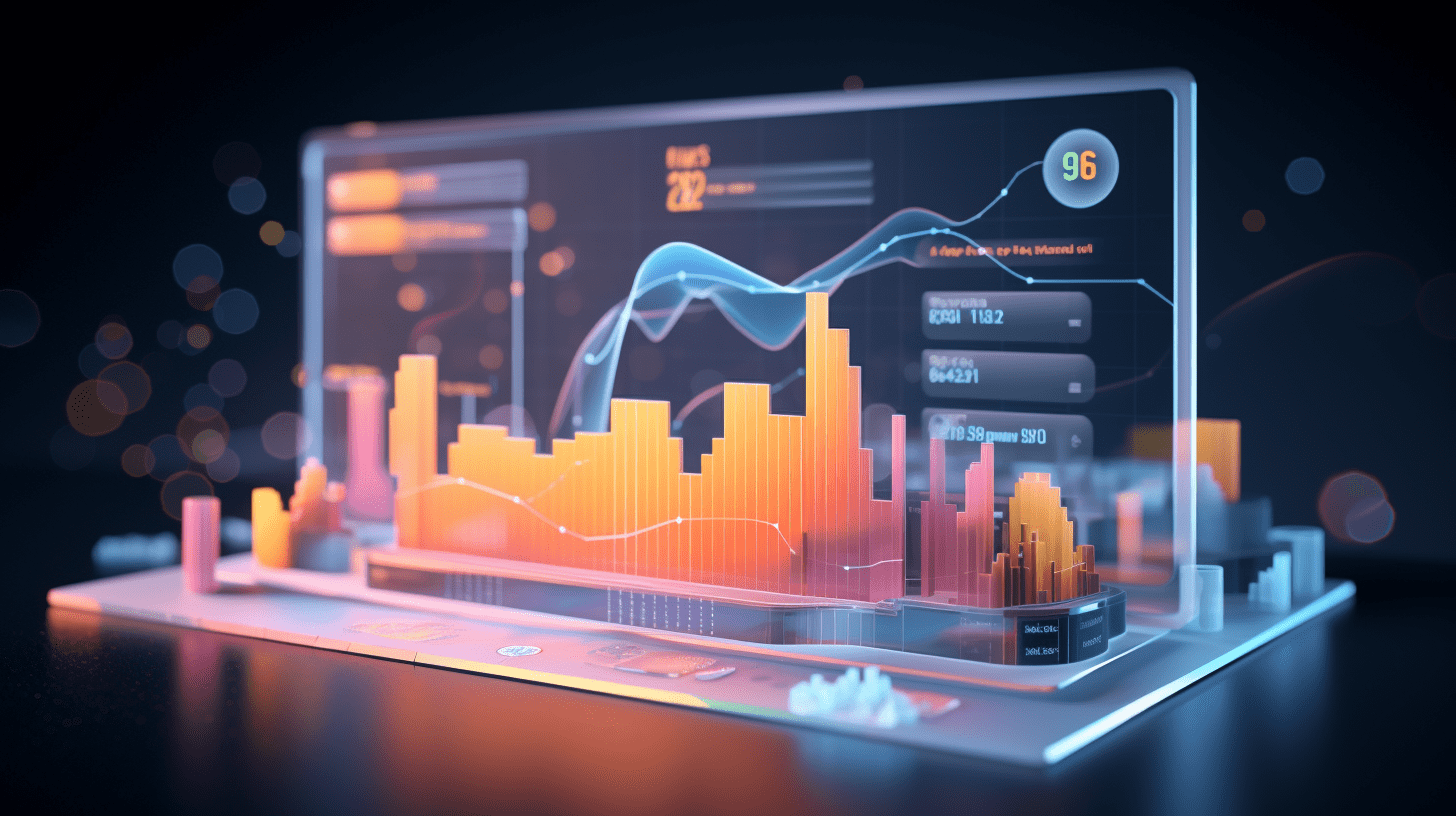
AI market: If you fear the high mountains, where else can you find low valleys?
One, AI industry narrative continues to refresh
Since mid-January, we have proposed that the market will usher in a new wave of upward trends, with AI as the forefront. After the Spring Festival, we continued to emphasize the "revaluation of Chinese AI assets combined with demands for autonomous controllability, with technology stocks possessing independent logic," while also believing that "from upstream to midstream and downstream, from concentration to diversified development, from AI to AI+, it is expected to become the three major trends of this round of AI market," which has recently been continuously validated by the market.
As the TMT transaction ratio temporarily rose to a historical high, it once caused concerns in the market about the end of the trend. However, as we judged, after a rapid increase in trading volume, the sector needs some time to digest and consolidate, but it usually does not lead to the systematic end of the trend. The impact is mainly on the structure, more likely to be digested by internal rotation and switching between high and low, to dissipate the short-term overheated market sentiment. Driven by industrial catalysis and policy, AI will continue to be the focus of the market.
Therefore, despite the recent fluctuations in the AI sector last week, ultimately amidst doubts and differences, it once again welcomed an upward trend and made new highs. The operators, optical modules, GPUs, PCBs, and HBM storage that we previously emphasized focusing on have become the main direction leading AI to continue to rise.
For this round of AI trend, on one hand, the AI and TMT sectors themselves account for a circulating market value of nearly 25%, covering a huge industrial chain from upstream computing hardware to midstream software services and downstream applications. It may experience temporary localized "overheating," but relatively cost-effective directions can still be found. Therefore, in response to short-term trading congestion, the core focus should be on timing within the AI industry chain, rather than making systematic switches outside of AI.
On the other hand, sentiment indicators like "transaction ratio," "turnover rate," and "crowding" are more applicable to industries with relatively stable fundamentals and industrial logic. When there are significant changes in an industry's trend, lifecycle, policy environment, and fundamental logic, it may break through the shackles of trading congestion and form a new trend. The middle and small caps in 2013-2014, core assets in 2016-2020, and new energy in 2020-2021 all continued to break through short-term trading congestion under industrial trends, gradually confirming their mainline status as transaction ratios continually hit new highs.
For this round of AI trends, we believe the same is true. Since the Spring Festival, major catalytic events in various sectors of the domestic AI industry chain have been continuous, and the industry narrative has continued to refresh, driving the market to be repeatedly active and to new highs. Currently, it has gradually formed a narrative loop where the entire industry chain from upstream to downstream benefits and is expected to accelerate its diffusion to various application scenarios. The industrial trend has become increasingly clear:
Starting from the release of DeepSeek, its low cost, open-source advantages have significantly accelerated the democratization of AI, causing the logic of the domestic AI industry to move from the centralized development of upstream infrastructure to the diversified innovation of midstream and downstream application aspects;
After the release of DeepSeek, major cloud service providers, operators, financial companies, large factories, government platforms, and other entities have accelerated their access, continually validating the assistance of DeepSeek in equalizing AI, greatly reducing the threshold for AI applications to land, promoting the increase in AI penetration in various industries, and accelerating the landing of more vertical applications;
Alibaba's latest financial report and capital expenditure guidance have exceeded market expectations, with double-digit growth in cloud revenue driven by AI applications. Looking ahead, it will increase investment around the core of AI strategy in the next three years. With its rich ecosystem, it is expected to accelerate the landing of AI in various application scenarios. The significant increase in capital expenditure, far exceeding expectations, has sounded the charge for domestic large factories to increase capital expenditure, possibly heralding the beginning of a year of large-scale domestic investment in computing power.
Therefore, if the emergence of DeepSeek marks a key turning point towards the diversified innovation of the domestic AI industry logic towards the midstream and downstream application aspects, the continued acceleration of access by major entities such as Alibaba validates this trend, while the substantial investment by domestic large factories like Alibaba may signal the formation of a narrative loop in the domestic AI industry logic. On one hand, the strong investment of large factories with rich application ecosystems in AI-driven strategies will accelerate the landing of midstream and downstream applications in various fields, reshaping the underlying logic of the Chinese industrial economy. On the other hand, the explosive demand brought about by accelerated midstream and downstream application innovation will also drive a double-digit growth in upstream computing power demand, leading to benefits throughout the entire industry chain. In this context, the market will further accelerate the reevaluation of the prospects for domestic AI development, and AI's position as the main theme in the medium to long term will be further consolidated.
Looking ahead over the next period, all sectors of the AI industry chain are expected to receive many positive catalysts and validations. Companies in various sectors of the AI industry chain in the US and Hong Kong stock markets, represented by Nvidia, Salesforce, Duolingo, among others, are continuing to disclose their latest performance. Companies like Alibaba and OpenAI are continually iterating and updating their large models, new tools such as AI glasses and AI agents are emerging, driving the rapid refreshment of the logic in all sectors of the AI industry chain.
Therefore, as AI remains the main focus direction in the current market, although a high transaction ratio in the short term may lead to temporary fluctuation adjustments in the sector, it usually does not lead to the systematic end of the trend. Under the backdrop of major industrial trends, it is more important to focus on internal timing rotation within the industry chain to find relatively cost-effective directions to address short-term localized overheating and small fluctuations.
Looking into the medium to long term, with the continuous catalysis and refreshing of the various links in the current AI industry chain and many positive catalysts and validations to follow, the AI sector may continue to be active repeatedly. Its mainline position is expected to be further consolidated, supported by industrial logic and policy environment, AI may continue to break through short-term trading congestion and remain the main focus direction in the medium to long term.
Two, AI Trends: If you fear the mountains, where else can you find valleys?
Combining medium-term industrial trends with short-term relative cost-effectiveness, among the top 50 segments of the AI industry chain, it is worth focusing on sectors such as optical modules, servers, AI chips, PCBs, and operators.
(In) the short term, considering the comprehensive business climate, crowding, and the flow of funds, it is advisable to focus on relatively low positions.Cost-effective upstream hardware is expected to benefit from the rotation and diffusion of the market.1. Business Activity
With the breakthrough of the AI industry and the recovery of domestic demand, many AI sub-sectors are expected to see improved business activity this year. According to market expectations, most sub-directions of AI are expected to experience accelerated business activity or a reversal of difficulties this year. Looking at the proportion of stocks with upward revisions in expected net profits for 2025 in the top 50 AI sub-directions so far this year, sectors such as operators, optical modules, RF components, intelligent logistics, AI phones, fiber optic cables, digital media, servers, and PCB are relatively prominent.
2. Congestion
In the current AI industry chain, the short-term trading congestion in some directions has reached relatively high levels, while there are also some sub-directions with relatively low congestion pressure, mainly focusing on upstream computational power hardware such as AI chips, GPUs, optical modules, PCBs, fiber optic cables, and drones.
3. Fund Flow
Looking at the net inflow of main funds/free float market value last week, the key directions that received inflows mainly include optical modules, AI chips, Siasun Robot & Automation, GPUs, HBM storage, PCBs, and high-speed copper connections. In terms of changes in the net inflow of main funds/free float market value compared to last week, directions such as digital media, liquid-cooled servers, drones, IDC, and AI wearables are leading the pack.
In the medium term, focusing on the direction of AI+ benefiting from the expansion of domestic capital spending by large domestic companies and the expected early realization of domestic computational power and application scenarios.
Firstly, the infrastructure of domestic computation power benefiting from the expansion of capital spending by large companies still has the highest certainty of performance growth. With the accelerated release of application inference demand after the model is fair, Alibaba has sounded the charge for the upward revision of domestic capital spending by large domestic companies, and subsequent large companies such as Tencent, ByteDance, and Xiaomi are expected to follow suit. The domestic computational power arms race is brewing, and the demand for computational power is expected to continue to materialize. Subsequent tenders and order implementations are likely to continue to catalyze, with a focus on IDCs, optical modules, AI chips, cloud services, and operators in the computational power infrastructure sector.
Secondly, as AI+ application scenarios expand, attention should be paid to directions that are expected to be the first to realize application implementation and performance realization downstream. The continuous progress of local deployment of large models is expected to accelerate the application implementation of reducing costs, improving quality, and increasing efficiency. Referring to the downstream sectors of AI in the US stock market that have already realized performance, and combining recent areas in China that have accelerated the deployment of large models, directions such as AI+ government affairs, AI+ office, AI+ advertising marketing, AI+ medical care, AI+ education, etc., have the potential to be the first to realize scene application implementation and performance realization.
Risk warning: Economic data fluctuations, policy loosening below expectations, Fed interest rate cuts below expectations, etc.
This article is reprinted from the WeChat public account "XYSTRATEGY", authored by the Strategy Team of Guotai Junan Securities; GMTEight Editor: Xu Wenqiang.
RECOMMEND
©️2013 - 2025 GMT EIGHT Holdings. All Rights Reserved.
Contact: contact@gmteight.com


